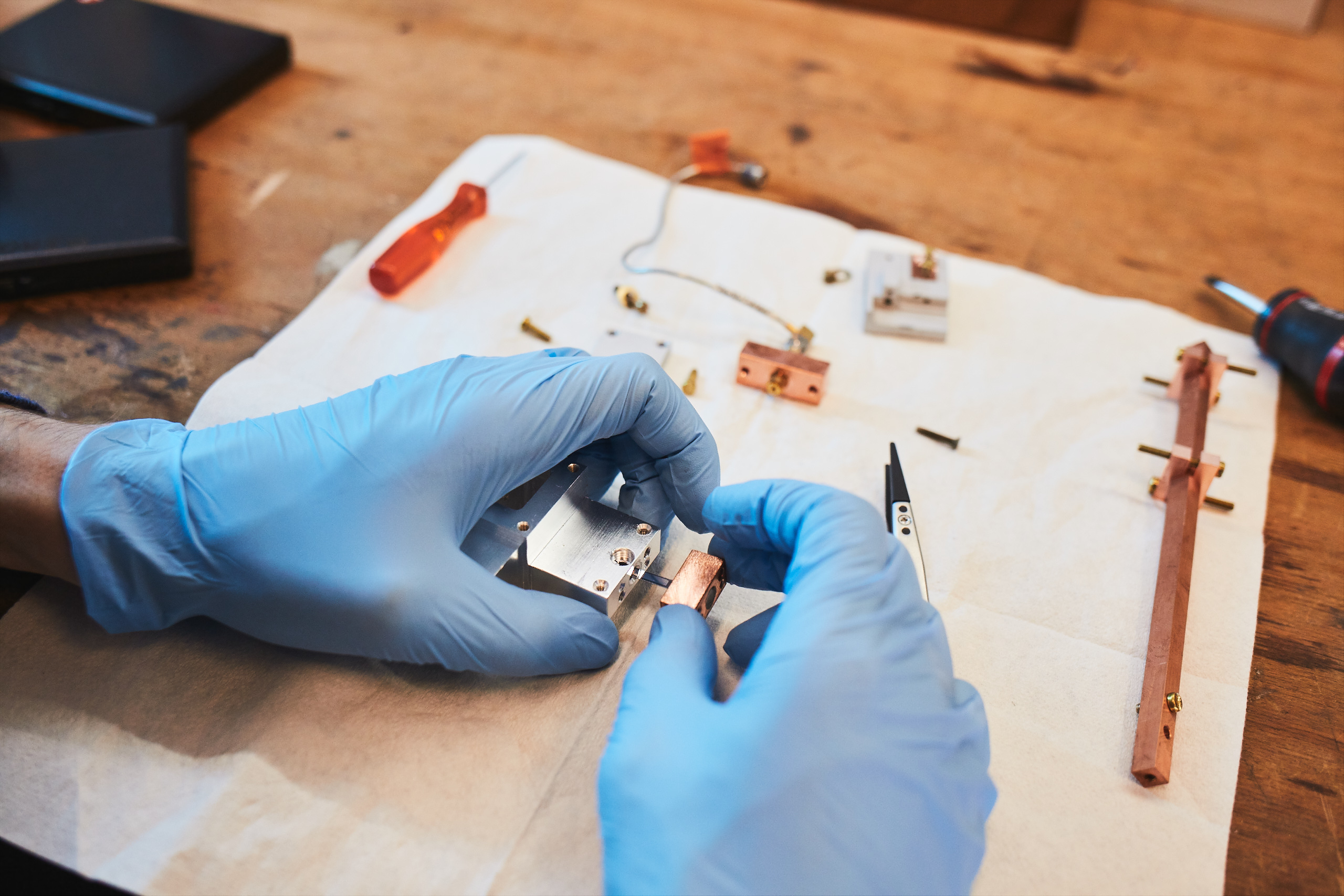
RobustSuperQ
Robust superconducting and hybrid quantum bits
Project coordinators
Nicolas Roch, CNRS
Denis Vion, CEA
Erika Borsje-Hekking, CNRS
Overview
The RobustSuperQ project aims at accelerating French R&D on superconducting and hybrid qubits protected by construction against decoherence.
Keywords: Quantum bits, qubits, quantum processors, superconductors, quantum coherence, decoherence
Website: https://www.robustsuperq.fr/
In a nutshell
RobustSuperQ is part of a post-transmon strategy, alternative to surface code, in which the French teams are at the forefront. It brings together all of these teams around three complementary concepts: the Cat-code architecture, spin qubits implanted on superconducting circuits, and topologically protected superconducting qubits. The goal at 5 years is to demonstrate a controllable and measurable high-fidelity quantum processor, which does not yet exist on any platform (optical, atomic or solid state). The goal at 3 years is to achieve a first protected logical qubit, based on one or a few physical qubits.
The acceleration of the development of these robust qubits is based on two components:
- A “Platforms” component: The two technical poles in the field, Ile-de-France and Grenoble, will be the subject of a qualitative leap in terms of resources, via the creation at CEA-Université Paris-Saclay of a new dedicated platform, and the acquisition of fabrication and characterization tools in the two poles. The resources will be pooled and interoperable, and the synergy of know-how and associated processes will be maximized.
- A “Manpower” component, involving three young researchers chairs who can recruit their own post-docs and doctoral students, as well as many post-docs and doctoral students assigned to the different work packages, by partners working directly on the project deliverables.
Challenges
- Accelerate French R&D on superconducting and hybrid qubits protected by construction against decoherence.
- Demonstrate a controllable and measurable high-fidelity quantum processor, which does not yet exist on any platform (optical, atomic or solid-state).
- Create a first protected logic qubit, based on one or a few physical qubits.
Tasks
- WP0: “Bricks of components and methods”, intended to develop the basic components and the processes and methods common to the various architectures of WP1, 2, and 3.
- WP1: “Cat Qubits” (cat-code) on qubits encoding quantum information in superposed coherent states of microwave resonators.
- WP2: “Dopant Spin Qubits”, encoding information in electronic and nuclear spins of dopants in a host crystal matrix, these spins being coupled to superconducting circuits.
- WP3: “Qubits with topological protection”, on the topological protection of quantum information using superconducting and hybrid circuits.
- WP4: coordination, and creation, modernization, and synergization of the two manufacturing platforms of quantum superconducting circuits.
Consortium
- Alice&Bob
- C12 Quantum Electronics
- Iramis, Institut rayonnement – matière (CEA Saclay)
- LaTEQS (PHELIQS, Université Grenoble Alpes / CEA)
- Mésoscopie : Laboratoire de Physique de l’ENS (LPENS, CNRS / ENS-PSL / Sorbonne Université / Université Paris Cité)
- PhysMESO et NS2 : Laboratoire de Physique des Solides (LPS, CNRS / Université Paris-Saclay)
- QCMX : Laboratoire de physique de la matière condensée (LPMC, CNRS / École Polytechnique)
- QuantECA, QuNES et Hybrid : Institut Néel (CNRS)
- Quantic (INRIA, ENS, Mines Paristech, UPMC, CNRS)
- Quantronics : Service de physique de l’état condensé (SPEC, CEA / CNRS / Université Paris-Saclay)
- Quantum Circuits : Laboratoire de Physique (LPENSL, CNRS / ENS de Lyon / Université Lyon 1)
- Silent Waves